I never realized quite how much I loved oxygen until arriving in Buenos Aires after 10 days in Cusco and the Inca Trail to Machu Picchu. When we got off the plane, I took a big deep breath and my lungs were easily filled with air dense with oxygen and it felt so good.
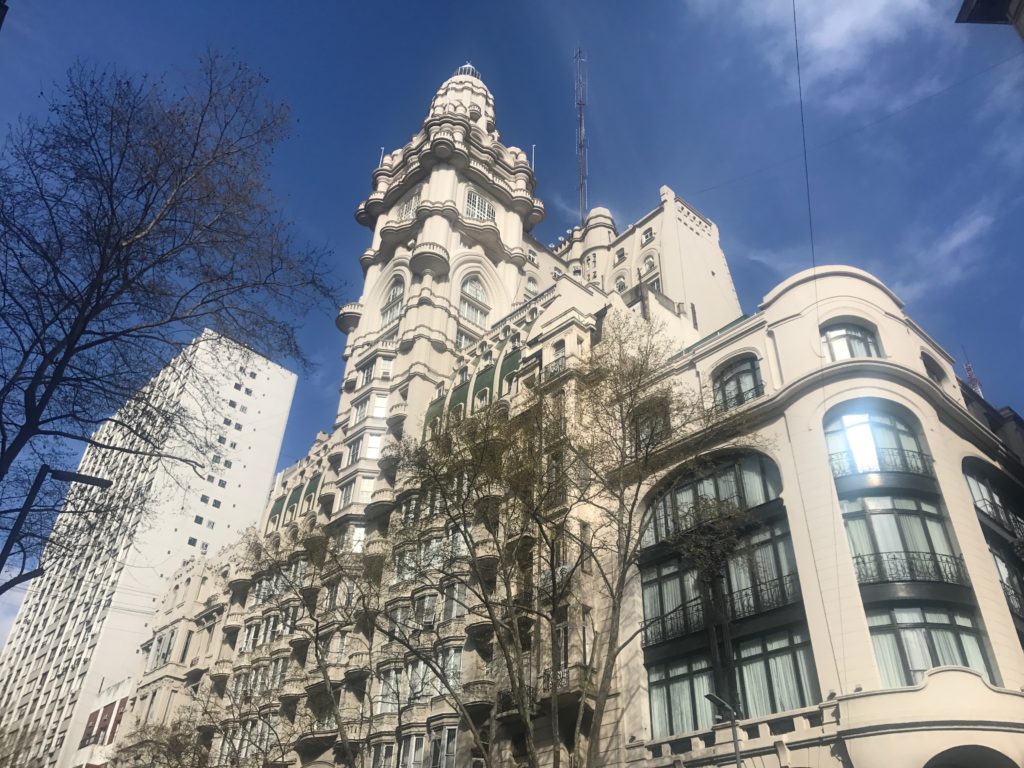
One of the most famous buildings in Buenos Aires designed to reflect The Devine Comedies.
It’s not that Buenos Aires has particularly great air, it’s just that coming from the high elevation of Cusco (3,400 meters), we were thrilled to be able to breath consistently, walk up three stairs without dying from exhaustion, and not have a tiny constant headache reminding us that we were not breed for this.
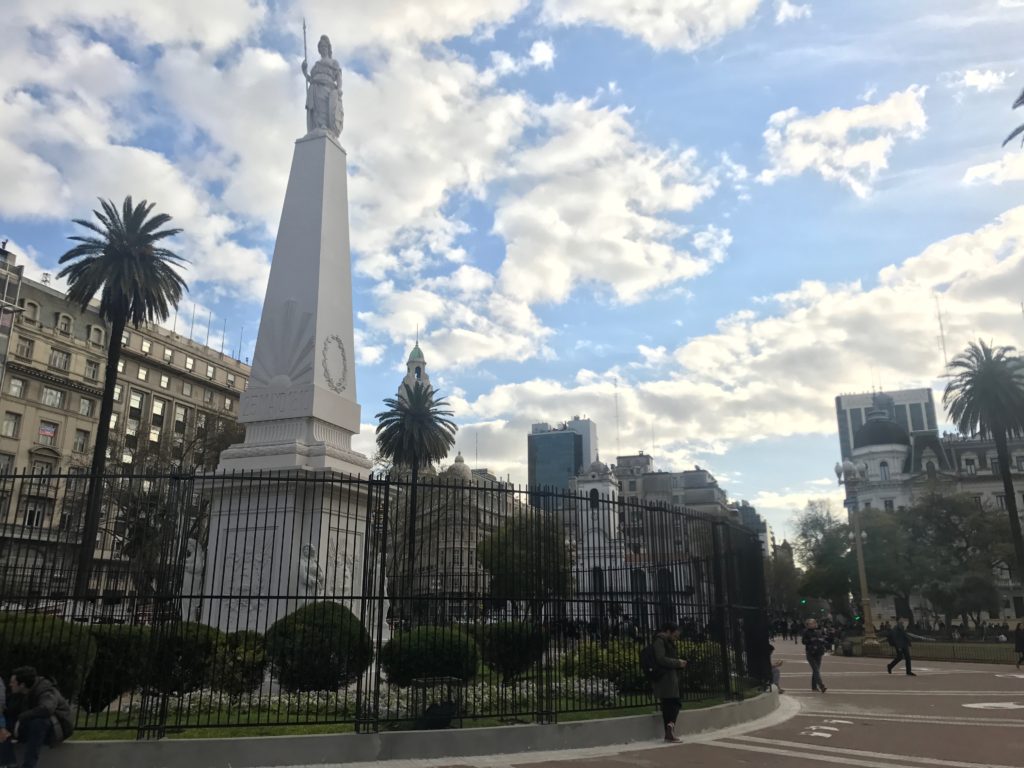
Monument to remember the Disappeared. The Mothers of the Disappeared still march around this monument every Thursday at 3:30.
It feels good to be in Buenos Aires for other (and more deserving) reasons, too. This city is quite beautiful and has a rich European vibe with lots of elaborate architecture. It’s a port city, but not quite the beach city that Lima was, despite its coastal location. This city has made me feel at home without trying too hard to impress me. I didn’t feel blown away by anything in particular, but I feel comfortable and happy here, and I know I will miss this place when I’m gone.
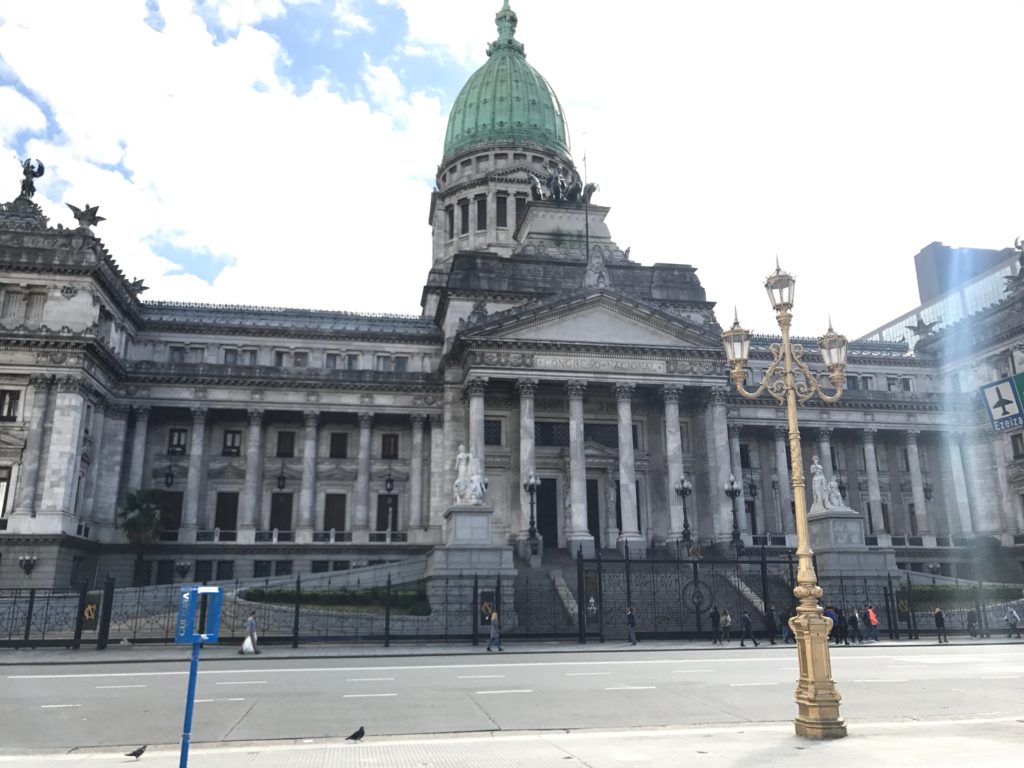
National Congress building
We took a really great walking tour yesterday along Avenue de Mayo, the street that connects the National Congress with the Presidential Palace. We passed over the world’s widest street (22 lanes and quite impressive unless you’re trying to cross it on foot which takes a while), saw wild parrots running around the park just like pigeons would (my favorite part obviously) and the famous balcony where Madonna as Eva Perón sang “Don’t Cry for me Argentina” (which has been stuck in my head the entire time we’ve been in this country). We also watched the Argentina World Cup Qualifier futbal (soccer) game from a bar in Argentina and had the best time!
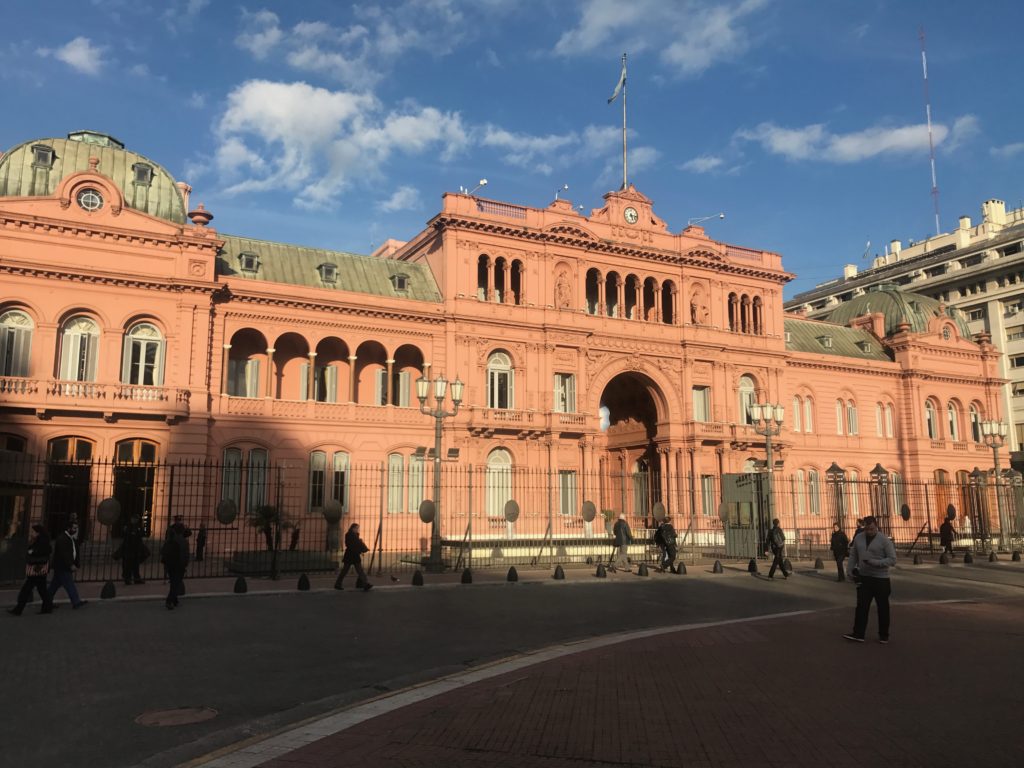
Don’t cry for me Argentina
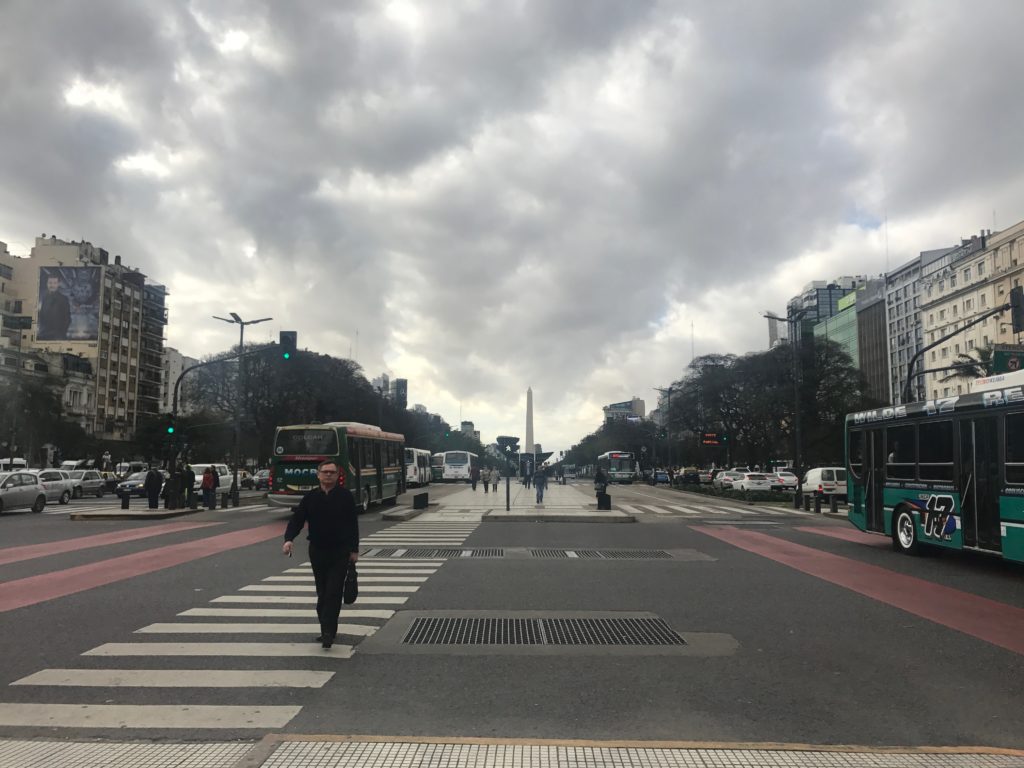
The world’s widest avenue! Plus a view of the Obelisco monument.
Initial Reactions On Buenos Aires:
- Thin History: Unlike Peru which has a long and rich history dating back BC with many ruling civilizations, Buenos Aires has more humble roots. I won’t try to recap the entire history (because I’d probably get it wrong and you probably don’t care), but the short version is that it didn’t really have anything the Spanish wanted, so it wasn’t colonized like other parts of South America. Eventually, the Spanish realized they could use Buenos Aires as a port to ship silver from Bolivia, and the city later capitalized on Agriculture which resulted in the second largest influx of immigrants (second only to the US). That is the short story of why it’s such a huge city today. But because of this thin history, you don’t see many buildings older than late 1800s and you don’t see anyone pedaling “traditional” dress (because there isn’t any).
- Very European. Related to the fact that the city was really built up at the end of the 19th century and the mass immigration the city experienced (most of which came from Italy), you see a lot of European influence in this city. The architecture is very ornate and beautiful and covers a range of genres that I can’t even begin to tell you about other than that they included at least French, Italian and Greek/Roman styles, among others. What I can tell you is that they’re very beautiful to look at.
- Not Touristy. This is a city where people live and work. They speak Spanish to you because that’s the langue they speak and they haven’t been forced to adapt English for the sake of tourists. There are not solicitors selling massages on every corner and I have yet to see a single souvenir shop. People are dressed for work in fancy suits and great coats and they’re living in a city that feels very modern and alive. This is not a gimmicky city and I like it.
- Great Beer Culture: We flagged one bar near our Airbnb, and both times we’ve tried to go to it, we have passed other awesome bars and gone to them instead! The best part is that many bars here have two-for-one happy hour specials that go pretty late into the evening (8 or 9 PM) which means we’ve drank twice an many beers as we’ve intended to. We’ve been overall impressed with the quality and quantity of beer bars around here!
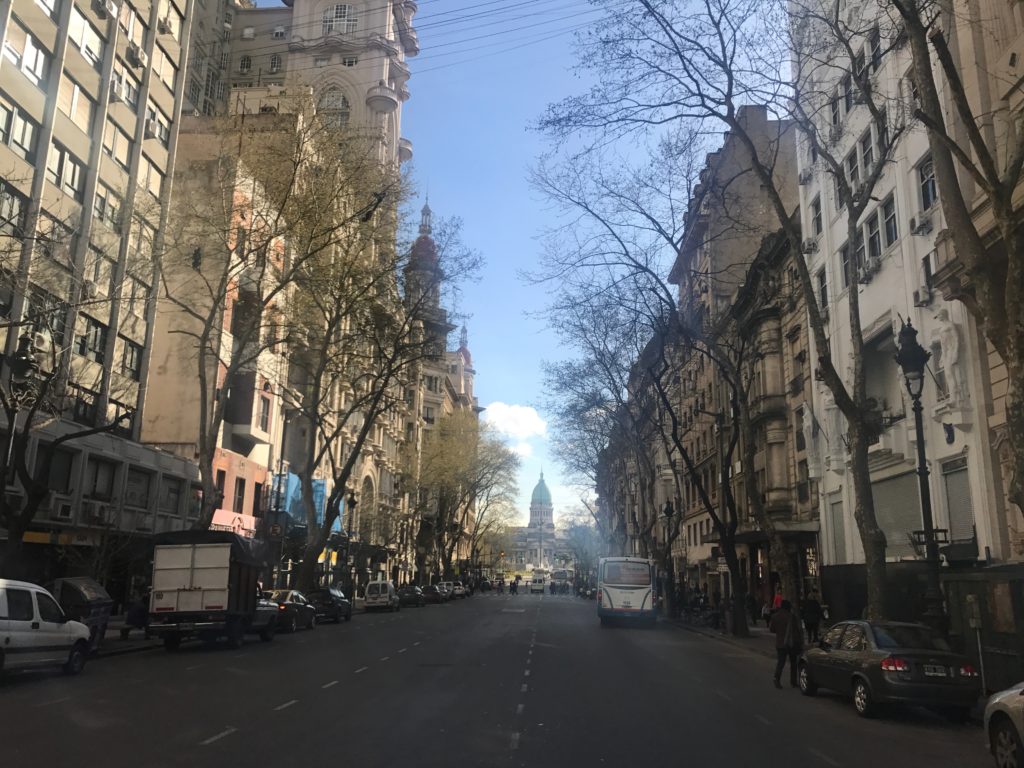
The view of Avenue de Mayo with National Congress at the end.
What you need to know:
- Population: ~3 million
- Altitude: 25 meters
- Exchange Rate: 17.27 Argentine pesos to $1 USD
- Primary Language: Spanish
- Walking Tour: Buenos Aires Free Walks
- Time Zone: Argentina Time, UTC/GMT -3 (2 hours later than US Central Time)
- Taxi: Yes
- Uber: Yes
- Public Transit: Bus & Train
- Emergency Number: 911
- Running: There is a nature reserve across the port form our Airbnb that has a running trail loop and lots of birds. I won’t tell you which I’m most looking forward to.
- American Football: It’s finally football season and Kenny is very excited! We found a bar (called Sugar) that plays American Football here in BA. Unfortunately, because of the time difference, we’re probably going to watch the Thursday kickoff game at home, but try that bar on Sunday.
- Starbucks: Yes, many.
- Local Starbucks Specialty: Not sure if this is local or they got this back in the US, but they have a Caramel Macchiato Frappuccino here!
- Coffee Price: 65 (~3.75 USD) for a coffee at Starbucks, 85 (~$5 USD) for a Caramel Macchiato at Starbucks and around 85-95 (~$5.50 USD) for cold brew at a specialty coffee shop.
- Beer Price: 100 – 120 soles (~$6 – $7 USD)
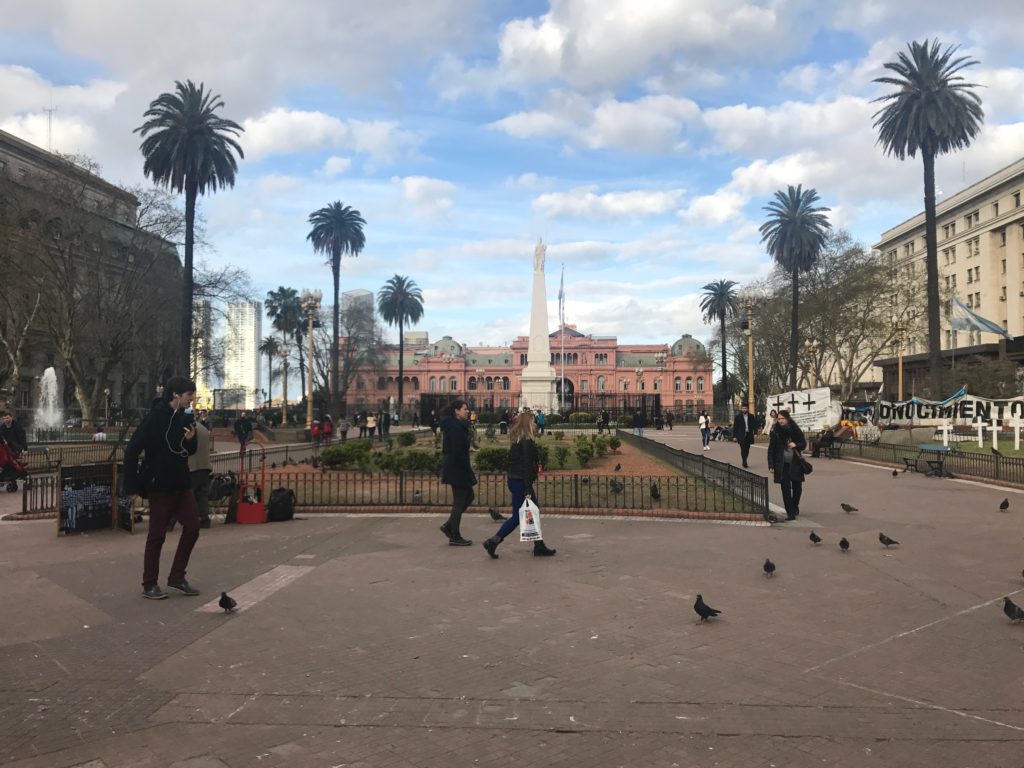
Plaza de Mayo (Not pictured are the parrots you will find all around this square!)
